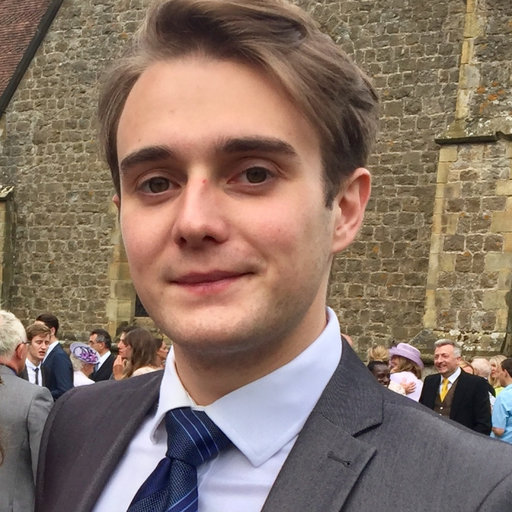October brings Medical Ultrasound Awareness Month #MUAM to the foreground of the SCoR, opening opportunities to highlight to the public and wider medical professionals the many uses of ultrasound in today’s healthcare environment, and how this dynamic modality and its work force is developing at a faster rate than ever.
The role of the modern sonographer is expanding with a plethora of opportunities including the widespread use of contrast enhanced ultrasound (CEUS). Techniques have become integral to the diagnosis of a wide variety of conditions both intra-abdominal in nature and beyond with continued pioneering research into superficial structures such as testes, intraoperative and intra-cavity uses.
While CEUS is still performed mainly by consultant radiologists, in a number of NHS trusts in the UK sonographers are undertaking cases independently. At King's College, where I work, the sonographers are encouraged to develop a greater understanding of CEUS and to recognise situations which might benefit from contrast use.
Such an example was a recent gallbladder perforation case, initially suspected by a sonographer and confirmed with CEUS based on their recommendations. This expansion of sonographic understanding allows a streamlining of the service through which sonographers and consultant radiologists work together to provide high quality patient care with greater opportunities for ionising radiation free diagnosis.
Such is the impact of CEUS that we are seeing referrers from the wider multidisciplinary team (MDT) actively choose CEUS over CT in some specialties. As sonographers are taking on additional responsibilities and developing advanced clinical practice and consultant practice roles, undertaking and reporting CEUS studies in different clinical situations would seem an ideal area for role expansion.
Having attended EUROSON 2018, it is clear that in the UK we are in a unique and privileged position which allows independent working and reporting within an overall team approach, as referred to in the article by Gibbs, Edwards and Harrison (2017)1. Gibbs et al refer to numerous studies to support the quality of independent sonographer reporting in the UK and highlight the differences between the UK and mainland Europe. The need to audit standards and undertake research into new developments is imperative to continue to provide proof that sonographers are a skilled and reliable workforce and are providing safe, effective, evidence-based care to patients.
One such way sonographers can strengthen their role and provide evidence of advanced or consultant level practice is via the active publication of work. Whilst at EUROSON 2018 a case I had been supported in writing up by consultants, professors and sonographers alike was the European Federation and Society for Ultrasound in Medicine and Biology case of the month (Moore et al 20182). This helped to boost the reputation of sonographers in the UK, their role as part of the team and as independent reporting practitioners. The active publication of interesting cases, posters, audits and research will help reinforce and increase awareness of the role of sonographers.
I would encourage anyone to reach out to publishers with content ranging from text book examples of conditions to the rare and interesting. From here we naturally need to progress into presenting these findings at conferences, start debates about where ultrasound is going, and how best to improve patient care both today and in the future.
Any publications and research can be used to help support applications for accreditation with the SCoR as an advanced or consultant practitioner (SCoR 2018)3.
My experiences as a newly qualified sonographer have been helped by working with an incredibly supportive team of sonographers, radiologists and the wider MDT. There is role expansion throughout the department with sonographers undertaking joint injections, PICC line insertions and complex specialties in diagnostics. Those in these specialist fields have been supported and trained by the consultant radiologists and, in turn, the sonographers undertake a key role in the training of registrars who enjoy learning with and from the team. This shared learning experience cements a profound and enjoyable environment for doctors and sonographers in which the patients benefit from the combined care that comes from such a skill mix.
I have found ultrasound and sonography a welcoming environment which is rapidly evolving. There is growing potential and need for role expansion. The sonographers and wider MDT work well together here in the UK to produce high quality patient care and ensure the availability of a broad skill mix that is open to those who desire to move forward within modern ultrasound.
However, to ensure we continue to develop, further efforts must be made via publications, presentations, and debates to help bring improved awareness of the role of sonographers and develop ideas and innovations for future practice.
References
- Gibbs, V. Edwards, H. and Harrison, G. (2017) Independent reporting sonographers: could other countries follow the UK's lead? Imaging & Therapy Practice, November.
- Moore, S. Yusuf, G. Sawyer, J. Sidhu, P. (2018) “Gallbladder Perforation and hepatic abscess formation in Advanced Cholecystitis: CEUS as an Adjunct” Available at http://www.efsumb.org/blog/archives/3417 (Accessed: 6 October 2018) SCoR (2018) Advanced Practice accreditation. Available at https://www.sor.org/career-progression/advanced-practitioners/advanced-practitioner-accreditation (Accessed: 5 October 2018)
- SCoR (2018) Advanced Practice accreditation. Available at https://www.sor.org/career-progression/advanced-practitioners/advanced-practitioner-accreditation (Accessed: 5 October 2018)
